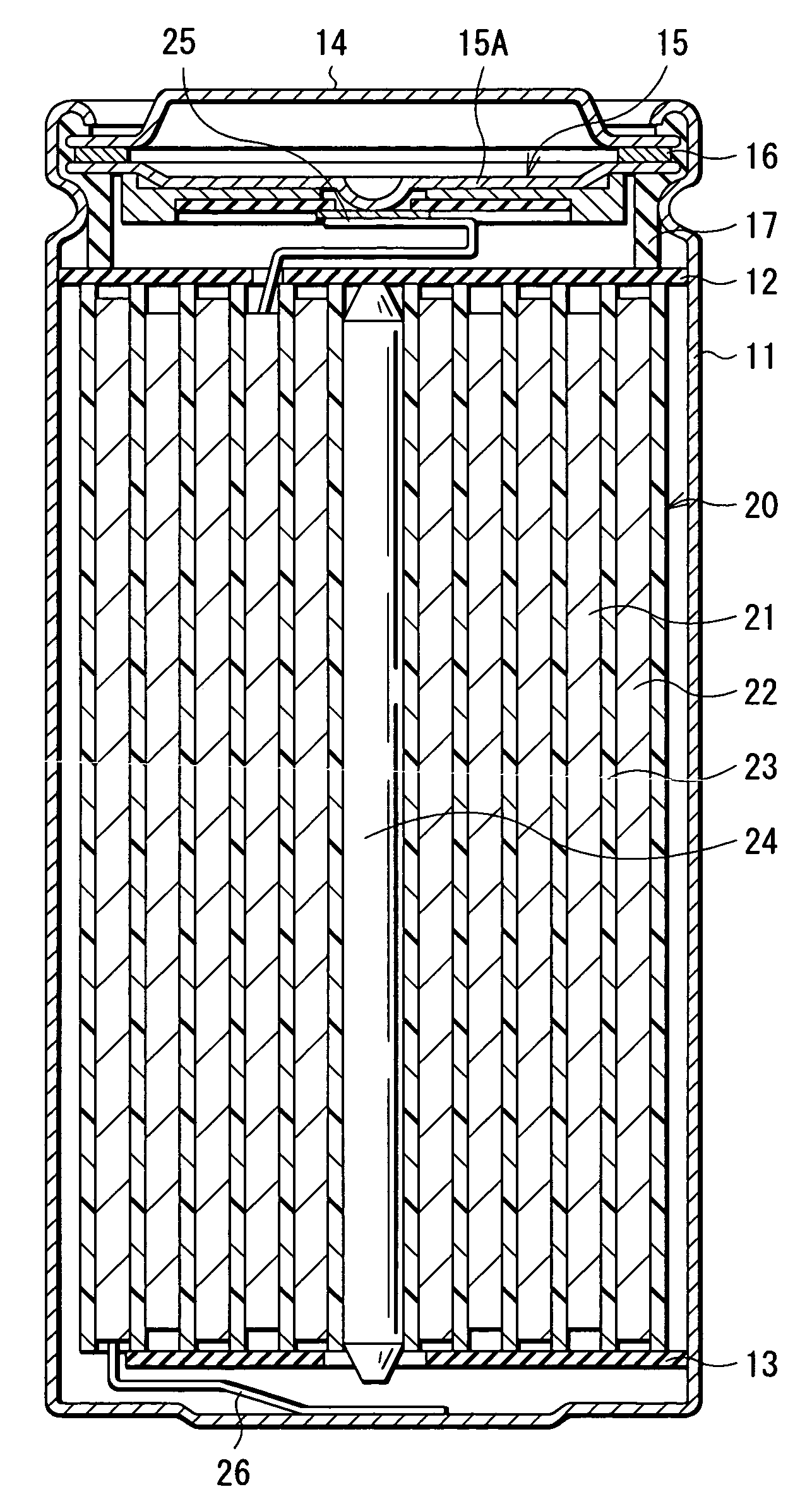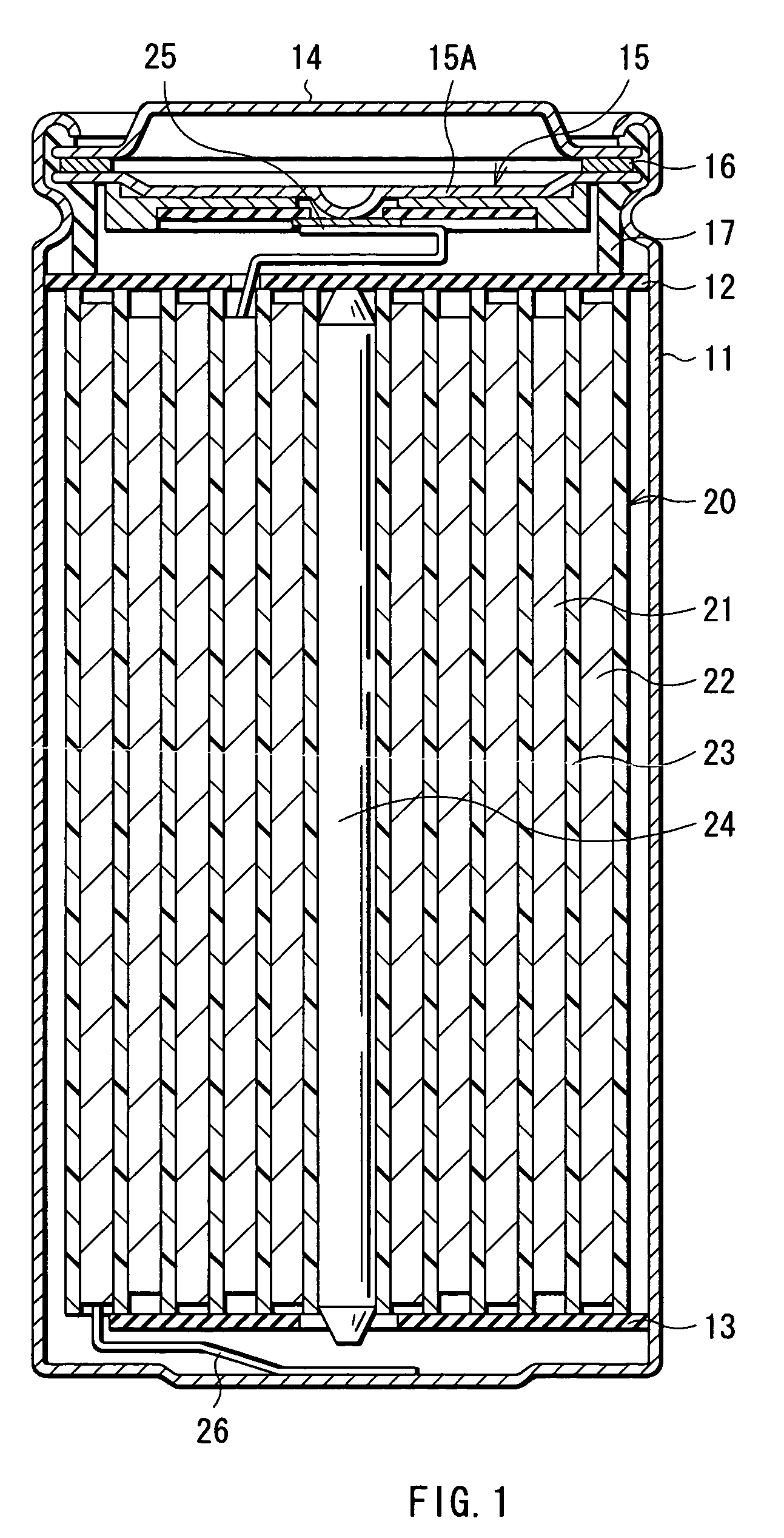Electrode and battery
a battery and electrode technology, applied in the field of batteries, can solve the problems of increasing manufacturing costs, inability to form a sufficient coat, and difficulty in maintaining about 60% of the discharge capacity, and achieve the effect of improving battery characteristics and effective coa
- Summary
- Abstract
- Description
- Claims
- Application Information
AI Technical Summary
Benefits of technology
Problems solved by technology
Method used
Image
Examples
examples 1-1 to 1-3
[0049] First, 64 parts by mass of lithium cobaltate (LiCoO2) as the cathode active material, 3 parts by mass of graphite as the conductive agent, and 3 parts by mass of polyvinylidene fluoride as the binder were uniformly mixed. After that, N-methylpyrrolidone was added to the mixture to obtain a cathode mixture coating liquid. Next, a cathode current collector made of an aluminum foil having a width of 56 mm, a length of 550 mm, and a thickness of 20 μm was uniformly coated with the obtained cathode mixture coating liquid, which was dried to form a cathode mixture layer having a thickness of 70 μm on the both faces of the cathode current collector. Thereby, the cathode 21 was fabricated. After that, the cathode lead 25 made of aluminum was mounted to an end of the cathode current collector.
[0050] Further, 94 parts by mass of graphite as the anode active material and 6 parts by mass of polyvinylidene fluoride as the binder were uniformly mixed. N-methylpyrrolidone was added to the ...
examples 2-1 to 2-4
[0057] As Examples 2-1,2-2, 2-3, and 2-4, secondary batteries were fabricated as in Example 1-2, except that instead of poly (dimethyl siloxane), poly (methyl hydro siloxane), poly (methyl phenyl siloxane), poly (hexafluoro propylene oxide), and perfluoro pentadecane, which are insoluble into the electrolytic solution and have a kinetic viscosity of 100 mm2 / S and a surface tension of about 20 mN / m were respectively used. The secondary batteries of Examples 2-1 to 2-4 were also disassembled and observed as in Example 1-2. In the result, it was confirmed that a coat containing poly (methyl hydro siloxane), poly (methyl phenyl siloxane), poly (hexafluoro propylene oxide), or perfluoro pentadecane was formed on the surface of the cathode 21 and the anode 22. Further, as in Example 1-2, a charge and discharge test was performed to examine cycle characteristics. The results thereof are shown in FIG. 3 along with the results of Example 1-2 and Comparative example 1.
[0058] As evidenced by ...
PUM
 Login to View More
Login to View More Abstract
Description
Claims
Application Information
 Login to View More
Login to View More - R&D
- Intellectual Property
- Life Sciences
- Materials
- Tech Scout
- Unparalleled Data Quality
- Higher Quality Content
- 60% Fewer Hallucinations
Browse by: Latest US Patents, China's latest patents, Technical Efficacy Thesaurus, Application Domain, Technology Topic, Popular Technical Reports.
© 2025 PatSnap. All rights reserved.Legal|Privacy policy|Modern Slavery Act Transparency Statement|Sitemap|About US| Contact US: help@patsnap.com



